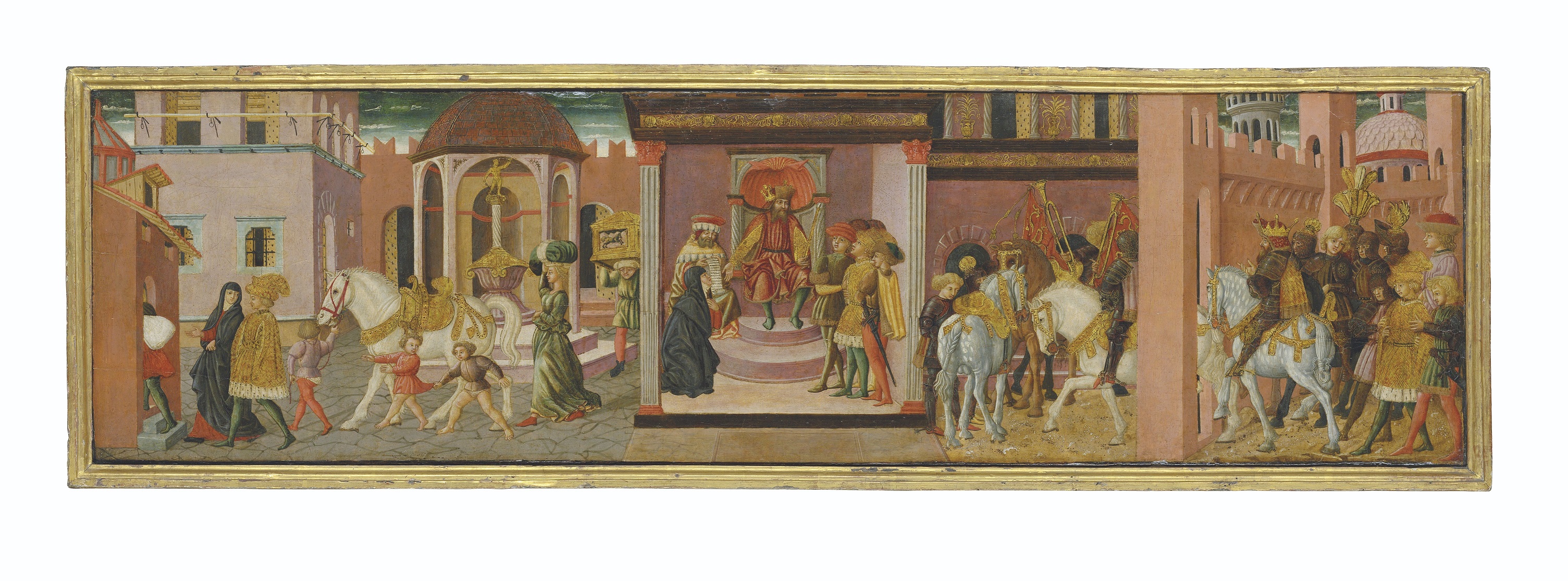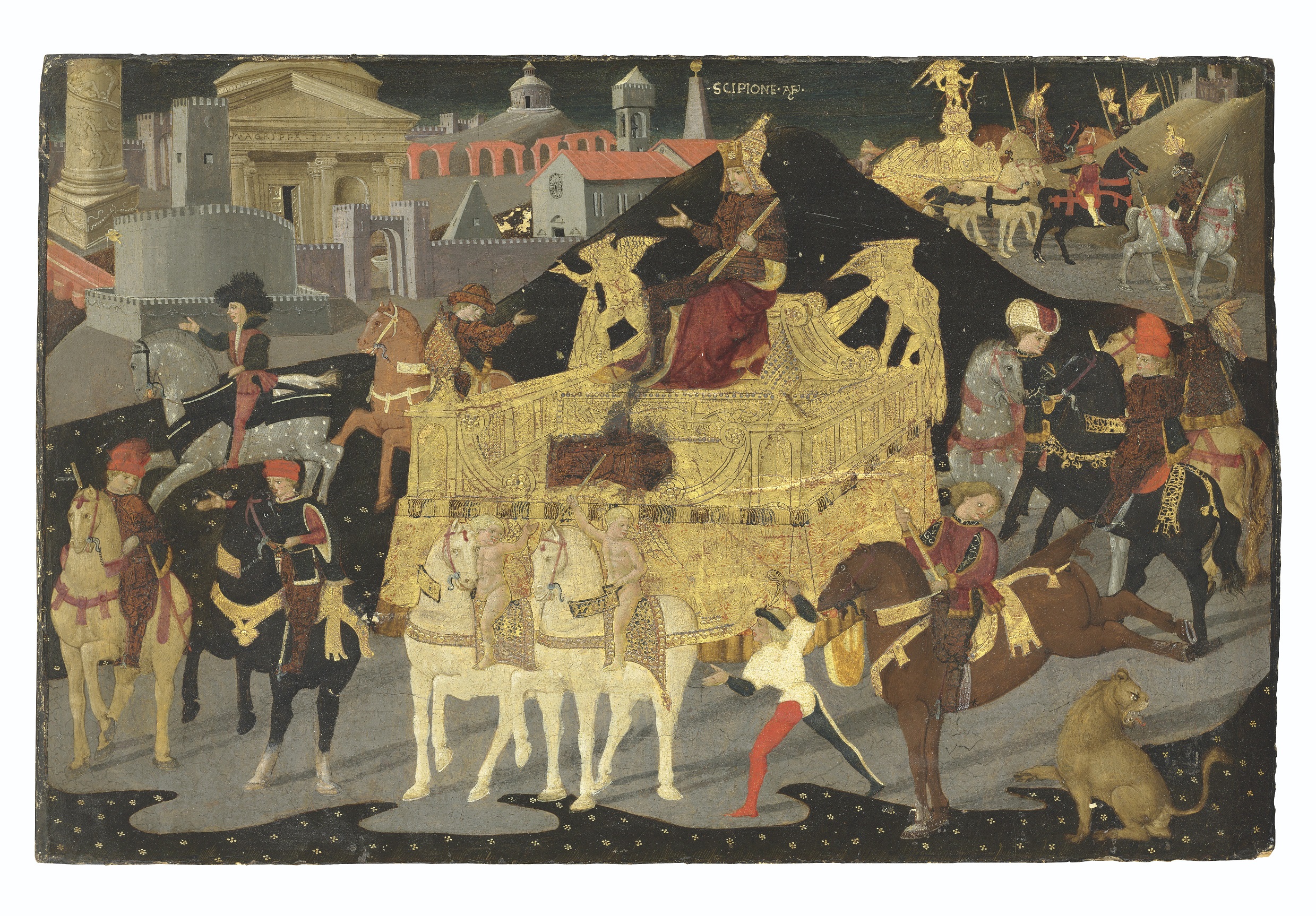Giovanni Toscani (Florence 1370/80–1430). Scenes from the tale of Ginevra and Bernabò of Genoa and Ambrogiuolo of Piacenza (Boccaccio, Decameron): a cassone front, tempera and gold on panel. Estimate: £700,000–1,000,000.
Highlighting
the collection is an exceptional and unusually well-preserved cassone
front by Giovanni Toscani (1370/80–1430). The panel has been recognised
as the pendant to that in the National Gallery of Scotland and depicts
Scenes from the tale of Ginevra and Bernabò of Genoa and Ambrogiuolo of
Piacenza (estimate: £700,000–1,000,000), a story illustrating the
triumphs of female virtue. As the story of Ginerva had not been
represented by earlier illuminators, Toscani was not constrained by any
traditional iconography.
Cassoni, literally translated as ‘large chests’, were amongst the most prestigious and luxurious objects made for wealthy patrons in Renaissance Italy and are today recognised for the exceptional artistry of their decoration and ornamentation. Usually commissioned in pairs and made to commemorate marriages of the city and court elite, cassoni were, until the mid-fifteenth century, frequently used as part of the bridal procession which accompanied the bride and her trousseau (carried in a cassone) from the house of her father to that of her husband. The use of arms and heraldry would publically announce the alliances of families and the extent of decoration could display the wealth and status of the patrons. In a more intimate context, the painted panels which usually decorated the front and sides of these chests were frequently selected to portray scenes with a moralising message by using classical, historical and literary subjects illustrating masculine valour and honour and feminine virtue.
The collection also includes a panel by Giovanni Di Ser Giovanni Guidi, Lo Scheggia (1406–1486) depicting Trajan and the Widow (estimate: £400,000–600,000). Lo Scheggia was the younger brother of Masaccio, and his work and, in particular, skill for narrative earned him important commissions during his career including executing the desco da parto for the birth of Lorenzo de’ Medici in 1449.Giovanni Di Ser Giovanni Guidi, Lo Scheggia (1406–1486). Trajan and the Widow. Estimate: £400,000–600,000.
The Triumph of Scipio Africanus (estimate: £300,000–500,000) by Apollonio Di Giovanni (C. 1416–1465), one of the most successful cassone painter of mid-quattrocento Florence, is another highlight of the collection. Scipio, the hero of republican Rome had an obvious appeal in ostensibly republican Florence; it is therefore unsurprising that five cassone fronts celebrating him by Apollonio are known. This panel is almost certainly the pendant to the Triumph of Caesar, formerly in the Faringdon collection.Apollonio Di Giovanni (C. 1416–1465). The Triumph of Scipio Africanus. Estimate: £300,000–500,000.
Cassoni, literally translated as ‘large chests’, were amongst the most prestigious and luxurious objects made for wealthy patrons in Renaissance Italy and are today recognised for the exceptional artistry of their decoration and ornamentation. Usually commissioned in pairs and made to commemorate marriages of the city and court elite, cassoni were, until the mid-fifteenth century, frequently used as part of the bridal procession which accompanied the bride and her trousseau (carried in a cassone) from the house of her father to that of her husband. The use of arms and heraldry would publically announce the alliances of families and the extent of decoration could display the wealth and status of the patrons. In a more intimate context, the painted panels which usually decorated the front and sides of these chests were frequently selected to portray scenes with a moralising message by using classical, historical and literary subjects illustrating masculine valour and honour and feminine virtue.


